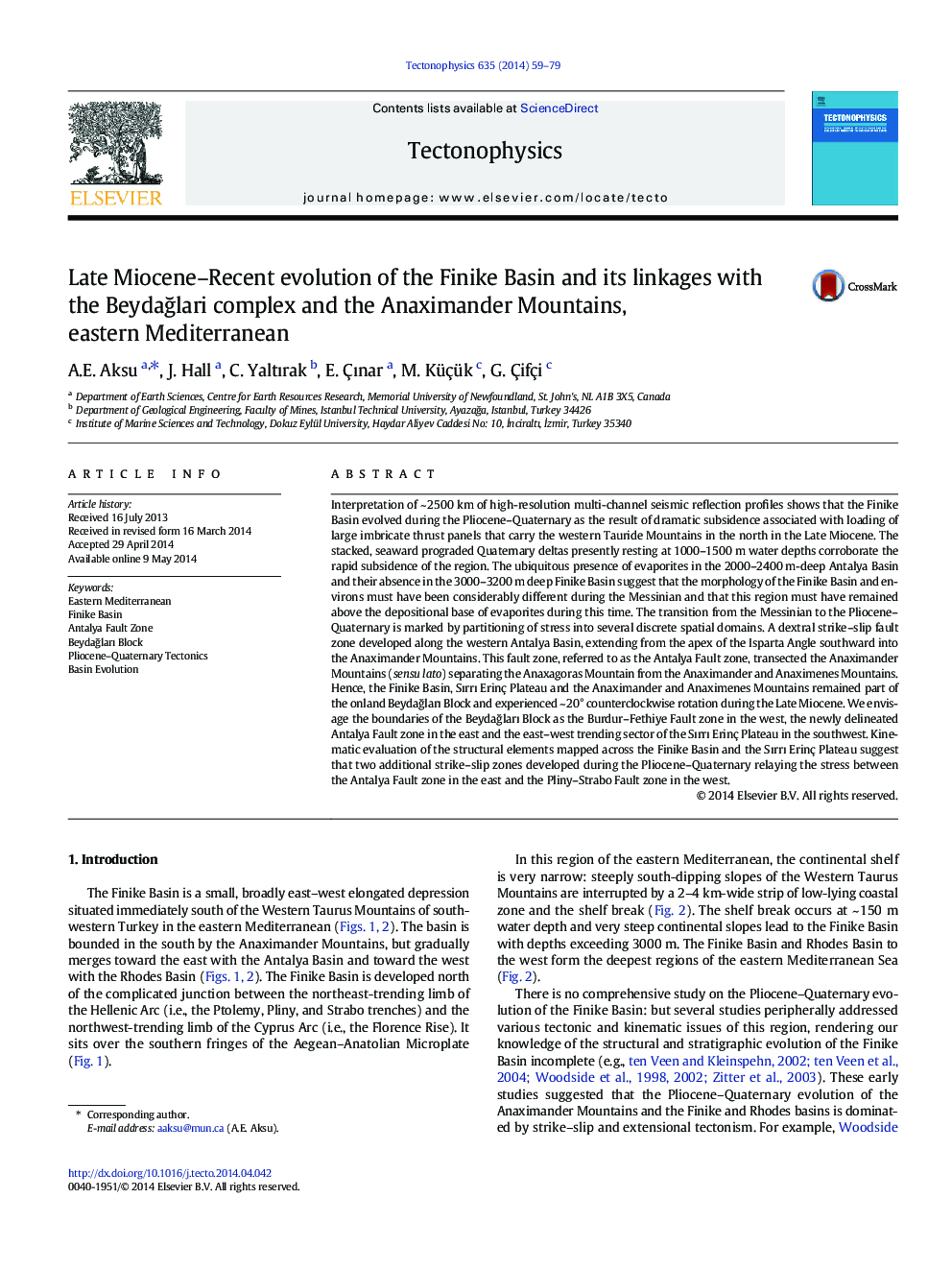| کد مقاله | کد نشریه | سال انتشار | مقاله انگلیسی | نسخه تمام متن |
|---|---|---|---|---|
| 6433727 | 1636756 | 2014 | 21 صفحه PDF | دانلود رایگان |

- Established seismic stratigraphy for Miocene-Quaternary succession in Finike Basin
- Showed evaporites are absent in Finike Basin despite their presence in Antalya Basin
- Used Quaternary deltas on slope to show considerable subsidence in Finike Basin
- Suggest Finike Basin evolved in response to loading of imbricate thrust of Taurides
Interpretation of ~ 2500 km of high-resolution multi-channel seismic reflection profiles shows that the Finike Basin evolved during the Pliocene-Quaternary as the result of dramatic subsidence associated with loading of large imbricate thrust panels that carry the western Tauride Mountains in the north in the Late Miocene. The stacked, seaward prograded Quaternary deltas presently resting at 1000-1500 m water depths corroborate the rapid subsidence of the region. The ubiquitous presence of evaporites in the 2000-2400 m-deep Antalya Basin and their absence in the 3000-3200 m deep Finike Basin suggest that the morphology of the Finike Basin and environs must have been considerably different during the Messinian and that this region must have remained above the depositional base of evaporites during this time. The transition from the Messinian to the Pliocene-Quaternary is marked by partitioning of stress into several discrete spatial domains. A dextral strike-slip fault zone developed along the western Antalya Basin, extending from the apex of the Isparta Angle southward into the Anaximander Mountains. This fault zone, referred to as the Antalya Fault zone, transected the Anaximander Mountains (sensu lato) separating the Anaxagoras Mountain from the Anaximander and Anaximenes Mountains. Hence, the Finike Basin, Sırrı Erinç Plateau and the Anaximander and Anaximenes Mountains remained part of the onland BeydaÄları Block and experienced ~ 20° counterclockwise rotation during the Late Miocene. We envisage the boundaries of the BeydaÄları Block as the Burdur-Fethiye Fault zone in the west, the newly delineated Antalya Fault zone in the east and the east-west trending sector of the Sırrı Erinç Plateau in the southwest. Kinematic evaluation of the structural elements mapped across the Finike Basin and the Sırrı Erinç Plateau suggest that two additional strike-slip zones developed during the Pliocene-Quaternary relaying the stress between the Antalya Fault zone in the east and the Pliny-Strabo Fault zone in the west.
Journal: Tectonophysics - Volume 635, 18 November 2014, Pages 59-79